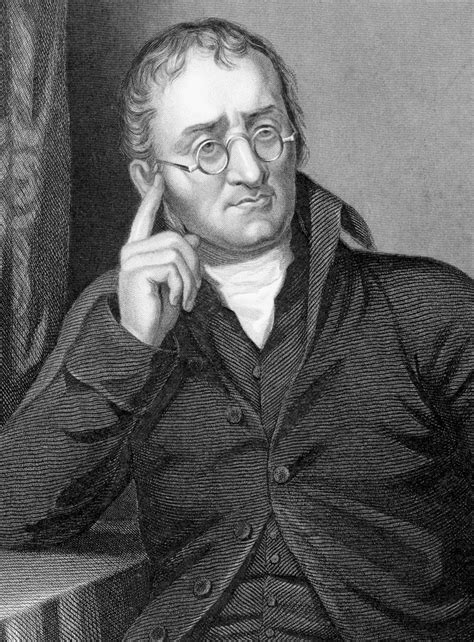How did dalton come up with his postulates

Web8 de jul. de 2024 · After studying the laws above with great scrutiny, he came up with the following postulates: Matter is made of very tiny particles called atoms. Atoms are indivisible structures that can neither be created nor destroyed during a chemical reaction (based on the law of conservation of mass). WebDalton based his theory on the law of conservation of mass and the law of constant composition. The first part of his theory states that all matter is made of atoms, which are indivisible . The second part of the theory says all atoms of a given element are … The Algebra 2 course, often taught in the 11th grade, covers Polynomials; … Learn fifth grade math—arithmetic with fractions and decimals, volume, unit … Learn statistics and probability for free—everything you'd want to know … Aprende gratuitamente sobre matemáticas, arte, programación, economía, física, … Learn how to code computer programs, how to design algorithms that make … The Precalculus course covers complex numbers; composite functions; … Learn all about the fields of economics, microeconomics, macroeconomics, … Learn trigonometry for free—right triangles, the unit circle, graphs, identities, and …
How did dalton come up with his postulates
Did you know?
WebEven Dalton's critics were impressed by the power and simplicity of his explanation, and it persuaded many of them that his atomic theory was worthy of further investigation. Unfortunately, Dalton included an additional postulate that prevented his theory from being accepted for many years. Web22 de fev. de 2024 · Ernest Rutherford, in full Ernest, Baron Rutherford of Nelson, (born August 30, 1871, Spring Grove, New Zealand—died October 19, 1937, Cambridge, Cambridgeshire, England), New Zealand-born British physicist considered the greatest experimentalist since Michael Faraday (1791–1867). Rutherford was the central figure in …
Web10 de abr. de 2015 · The Dalton Period extends from 10,500-9,900 years ago (circa 8500-7900 BC), during which there existed a culture of ancient Native American hunter-getherers (referred to as the Dalton people) who made a distinctive set of stone tools that are today found at sites across the middle of the United States. Landscape. WebJohn Dalton, a British school teacher, published his theory about atoms in 1808. His findings were based on experiments and the laws of chemical combination. Postulates All matter consists of indivisible particles called atoms. Atoms of the same element are similar in shape and mass, but differ from the atoms of other elements.
WebJohn Dalton published his ideas about atoms in 1803. He thought that all matter was made of tiny particles called atoms, which he imagined as tiny solid balls. Dalton's model included these ideas ... Web6 de set. de 2024 · John Dalton ’s Atomic theory has three principles that remain relatively unchanged. First, Elements are made of the smallest indivisible particles called atoms. Second, all atoms for a particular element are identical. Third, atoms of different elements can be told apart by their atomic weight.
WebAt the beginning of the 19th century, the English scientist John Dalton proposed an atomic theory that became the basis for the study of chemistry. His theory contained five main propositions: 1. All matter is comprised of tiny, definite particles called atoms.
Web31 de mar. de 2024 · A theory of chemical combination, first stated by John Dalton in 1803. It involves the following postulates: (1) Elements consist of indivisible small particles (atoms). (2) All atoms of the same element are identical; different elements have different types of atom. (3) Atoms can neither be created nor destroyed. (4) ‘Compound elements’ … alliance 500/60 r 26 5Web21 de mar. de 2024 · Our goal will be to go behind the myth-making and beyond the popularized presentations of relativity in order to gain a deeper understanding of both Einstein the person and the concepts, predictions, and strange paradoxes of his theory. Some of the questions we will address include: How did Einstein come up with his ideas? alliance 510701Web4 de set. de 2024 · Eventually, it all came together in his theory of evolution by natural selection. It’s easy to see how these influences helped shape Darwin’s ideas, although it actually took Darwin years to formulate his theory. His reasoning went like this: Like Lamarck, Darwin assumed that species can change over time. alliance4usefulevidence